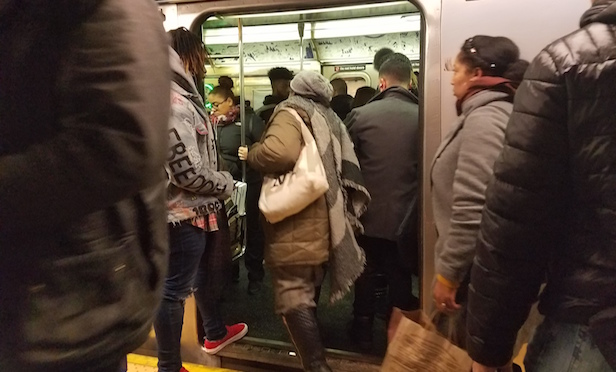
NEW YORK CITY—The Regional Plan Association has released a report that calls for the $71.4-billion merger of regional MTA train lines—the Long Island Rail Road, Metro North and New Jersey Transit—to form the Trans-Regional Express, an integrated regional rail network.
The merged regional commuter rail network, named T-REX for short, would take 30-years to complete and require an annual investment of $2.4 billion over and above the investment required by the MTA, New York and New Jersey to fund the controversial $39-billion NEC Future program that includes the Gateway project and the additional tracks five and six between North Brunswick, NJ and Green's Farms, CT, the RPA states in its report.
The T-REX report, released in conjunction with the RPA's fourth regional plan, states the current Metro-North, LIRR and NJ Transit infrastructure was largely built by private railroads more than a century ago and leaves many areas in the New York metro region poorly served or without commuter rail service at all.
“The system wasn't designed to serve today's travel patterns and has little capacity for future growth,” the RPA states in the T-REX report. “Without a new design, substantial upgrades and governance changes, New York will fall further behind the metropolitan areas that are investing in fully integrated metro systems, and fail to capitalize on this region's global economic strengths.”
Some of the current rail network's shortcomings include: many assets, including stations, tracks, interlockings and Hudson River rail tunnels, are well past their useful life or do not meet modern standards; all service stubs end in Manhattan, preventing trains from traveling from one part of the region to the other; inadequate service during high growth ridership times outside of the morning and afternoon rush on most lines; poor service to many jobs centers with growth potential, such as Bridgeport, CT and Hicksville, NY; some large downtowns, such as Paterson, NJ, does not have direct services at all; in fact, many residential areas with sufficient densities don't have much commuter rail service to speak of, such as Bergen, Passaic and Monmouth counties.
The report also states that service is either too infrequent or expensive for many residents in the Bronx, Brooklyn, Queens, Hudson and Essex counties.
The long-term plan to create T-REX would address some immediate priorities, including creating through service to Penn Station and relieving congestion across the Hudson River. The RPA states that the number of commuters traveling daily from the suburbs into Manhattan could grow as much as 34% in the next 25 years, which is way over the capacity of the current system. Another problem connected with fragmented control of the system is that such an organizational structure makes planning for upgrades and repairs difficult.
The RPA report suggests the creation of T-REX could be done in three phases—the first phase would be the development of the “Crosstown Line” that would involve the construction of new tracks and tunnels under the East River to provide service between New Jersey and Long Island.
Phase two would be for a new Trans Hudson and East Side service. The RPA report notes that before 2040 the Gateway/Crosstown tunnels will be at capacity and therefore planning should begin now to build additional rail tunnels from Union City, NJ to 57th Street in Midtown. In addition to providing expanded crosstown service, the new tunnels at 57th Street would allow for the restoration of passenger service on the West Shore Line, a portion of the North Branch line and the Susquehanna lines in Bergen and Passaic counties, as well as in Rockland County, NY.
“The completion of this portion of the system would help reduce the demand for express buses, which along with bus intercept facilities along the T-REX in New Jersey, could enable the Port Authority to replace its current bus terminal with a smaller Manhattan facility or eventually eliminate it entirely,” the RPA report states.
The final T-REX phase involves finishing the uptown portion of the “Manhattan Spine” to connect to the Bronx, Westchester, the Hudson Valley and Connecticut, as well as work on the lower trans-Hudson tunnels that would complete the “Jersey Loop” that connects the network to service to the north to Hudson County.
The cost estimates for this ambitious project are daunting. The largest component of the T-REX initiative involves $37 billion in infrastructure required for the core capacity lines—the Crosstown, Manhattan Spine and Jersey Loop. The report states that the 71 track miles of tunnel are estimated to cost $24 billion, with the 19 underground stations are estimated at $14 billion.
T-REX would also include 147 miles of new, retrofitted and reactivated surface rail lines with 57 stations. The estimated cost for these track segments and stations were pegged at $27 billion.
Another significant expense with T-REX involves the construction or development of new rail yard (maintenance and storage) facilities. The report, which notes that the project cost does not include the addition of new rolling stock, states that 12 new large yards and eight new smaller facilities would be required at a cost of $4 billion. Another $1.2 billion would also be needed to expand 12 existing rail yards.
© Touchpoint Markets, All Rights Reserved. Request academic re-use from www.copyright.com. All other uses, submit a request to [email protected]. For more inforrmation visit Asset & Logo Licensing.







